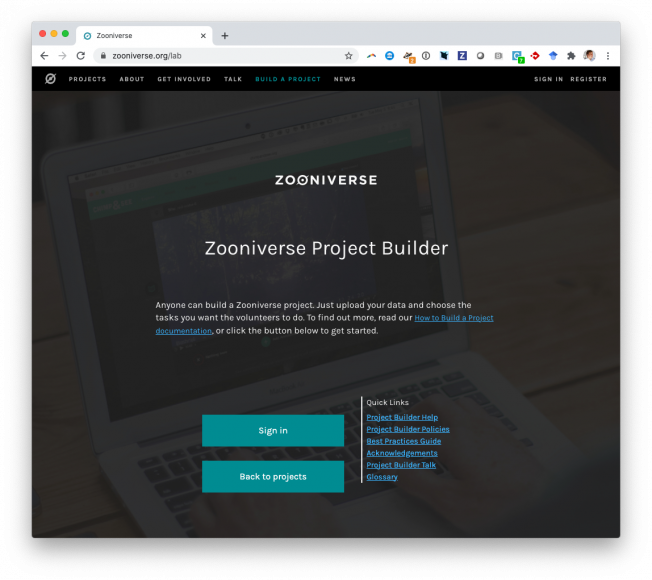Citizen science frontiers: Efficiency, engagement, and serendipitous discovery with human-machine systems.
Proceedings of the National Academy of Sciences of the United States of America 116:6 (2019) 1902-1909
Abstract:
Citizen science has proved to be a unique and effective tool in helping science and society cope with the ever-growing data rates and volumes that characterize the modern research landscape. It also serves a critical role in engaging the public with research in a direct, authentic fashion and by doing so promotes a better understanding of the processes of science. To take full advantage of the onslaught of data being experienced across the disciplines, it is essential that citizen science platforms leverage the complementary strengths of humans and machines. This Perspectives piece explores the issues encountered in designing human-machine systems optimized for both efficiency and volunteer engagement, while striving to safeguard and encourage opportunities for serendipitous discovery. We discuss case studies from Zooniverse, a large online citizen science platform, and show that combining human and machine classifications can efficiently produce results superior to those of either one alone and how smart task allocation can lead to further efficiencies in the system. While these examples make clear the promise of human-machine integration within an online citizen science system, we then explore in detail how system design choices can inadvertently lower volunteer engagement, create exclusionary practices, and reduce opportunity for serendipitous discovery. Throughout we investigate the tensions that arise when designing a human-machine system serving the dual goals of carrying out research in the most efficient manner possible while empowering a broad community to authentically engage in this research.K2-288Bb: A Small Temperate Planet in a Low-mass Binary System Discovered by Citizen Scientists
ASTRONOMICAL JOURNAL 157:2 (2019) ARTN 40
The fifteenth data release of the Sloan Digital Sky Surveys: First release of MaNGA-derived quantities, data visualization tools, and Stellar Library
Astrophysical Journal Supplement Institute of Physics 240:23 (2019)
Abstract:
Twenty years have passed since first light for the Sloan Digital Sky Survey (SDSS). Here, we release data taken by the fourth phase of SDSS (SDSS-IV) across its first three years of operation (2014 July–2017 July). This is the third data release for SDSS-IV, and the 15th from SDSS (Data Release Fifteen; DR15). New data come from MaNGA—we release 4824 data cubes, as well as the first stellar spectra in the MaNGA Stellar Library (MaStar), the first set of survey-supported analysis products (e.g., stellar and gas kinematics, emission-line and other maps) from the MaNGA Data Analysis Pipeline, and a new data visualization and access tool we call "Marvin." The next data release, DR16, will include new data from both APOGEE-2 and eBOSS; those surveys release no new data here, but we document updates and corrections to their data processing pipelines. The release is cumulative; it also includes the most recent reductions and calibrations of all data taken by SDSS since first light. In this paper, we describe the location and format of the data and tools and cite technical references describing how it was obtained and processed. The SDSS website (www.sdss.org) has also been updated, providing links to data downloads, tutorials, and examples of data use. Although SDSS-IV will continue to collect astronomical data until 2020, and will be followed by SDSS-V (2020–2025), we end this paper by describing plans to ensure the sustainability of the SDSS data archive for many years beyond the collection of data.SNITCH: seeking a simple, informative star formation history inference tool
Monthly Notices of the Royal Astronomical Society Oxford University Press 484:3 (2019) 3590-3603
Abstract:
Deriving a simple, analytic galaxy star formation history (SFH) using observational data is a complex task without the proper tool to hand. We therefore present SNITCH, an open source code written in PYTHON, developed to quickly (2 min) infer the parameters describing an analytic SFH model from the emission and absorption features of a galaxy spectrum dominated by star formation gas ionization. SNITCH uses the Flexible Stellar Population Synthesis models of Conroy, Gunn & White (2009), the MaNGA Data Analysis Pipeline and a Markov Chain Monte Carlo method in order to infer three parameters (time of quenching, rate of quenching, and model metallicity) which best describe an exponentially declining quenching history. This code was written for use on the MaNGA spectral data cubes but is customizable by a user so that it can be used for any scenario where a galaxy spectrum has been obtained, and adapted to infer a user defined analytic SFH model for specific science cases. Herein, we outline the rigorous testing applied to SNITCH and show that it is both accurate and precise at deriving the SFH of a galaxy spectra. The tests suggest that SNITCHis sensitive to the most recent epoch of star formation but can also trace the quenching of star formation even if the true decline does not occur at an exponential rate. With the use of both an analytical SFH and only five spectral features, we advocate that this code be used as a comparative tool across a large population of spectra, either for integral field unit data cubes or across a population of galaxy spectra.Everyone counts? Design considerations in online citizen science
Journal of Science Communication 18:1 (2019)



